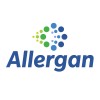
Eyelid Closure in Glaucoma Therapy
GlaucomaThis research is being done to determine if closing your eyelids after you take your glaucoma drops makes them more effective in lowering your eye pressure, and to determine if closing your eyelids for 5 minutes is better than closing them for one minute

Evaluation of Pascal Laser Trabeculoplaty
Open Angle GlaucomaOcular HypertensionLaser Trabeculoplasty has been shown to be effective in lowering intraocular pressure (IOP) in patients with primary open-angle glaucoma (POAG). Although initially demonstrated with the Argon laser (ALT), several other laser systems have also been employed with comparable efficacy. Recently, Selective Laser Trabeculoplasty (SLT) has been shown to lower intraocular pressure comparable to ALT. The advantage of SLT is that the target eye structure, the trabecular meshwork, remains intact with minimal damage at the cellular level. In contrast, ALT lowers IOP at the expense of scarring of the trabecular meshwork. The purpose of this study is to evaluate the efficacy of lowering IOP with Pascal Laser Trabeculoplasty (PLT) employing reduced energy levels compared to ALT and a computer guided pattern of laser treatment applications.

Prospective Evaluation of the Efficacy of Pascal Laser Iridotomy and Pascal Laser Peripheral Iridoplasty:...
GlaucomaObjective: The main objective of this study is to evaluate the efficacy of Pascal Laser Iridotomy and Pascal Laser Peripheral Iridoplasty in lowering intraocular pressure and opening up the angles in patients with narrow angles, primary angle closure and primary angle closure glaucoma. The specific objectives are to evaluate the pain and inflammation associated with the procedure and its possible adverse effects on the lens and corneal endothelium. Study Design: Prospective, interventional case series Study Population: Healthy males and females with appositional angle closure aged 21 y/o and above Methods: Potential participants are evaluated by a glaucoma specialist in National University Hospital. If they are identified as having appositional angle closure they are invited to participate in the study and assigned to either iridotomy or iridoplasty depending on the mechanism of angle closure present. Pupil block for Pascal Laser Iridotomy and plateau iris and angle crowding for Pascal Laser Peripheral Iridoplasty. If they agree to participate they will undergo visual acuity, slit lamp examination, intraocular pressure determination by Goldmann Applanation Tonometry, gonioscopy, optic nerve head evaluation by indirect ophthalmoscopy and lens evaluation by LOCS III opacity grading system. Humphrey visual field examination using 24-2 SITA standard algorithm and stereodisc photos will be obtained if not done within the past 12 months. Anterior segment OCT and laser flare meter will also be performed prior to the procedure. Enrolled patients will be divided into 2 groups. The first group will be assigned to Pascal Laser Iridotomy. The primary mechanism of angle closure in this group is pupillary block. The second group will be assigned to Pascal Laser Peripheral Iridoplasty. This group has non-pupil bock mechanisms which include plateau iris or angle crowding. After the laser procedure, follow-up examinations will be done 1 hr post laser, 1 week, 1 month, 3 months and 6 months. Outcome Measures: The primary outcome measures are the intraocular pressure difference pre and post laser and the opening of angles. Secondary outcome measures are pain and inflammation associated with laser procedure, lens and corneal endothelial changes.

Fixed Combination Brinzolamide 1%/Timolol 0.5% Versus Brinzolamide 1% + Timolol 0.5% in Open-Angle...
Open-Angle GlaucomaOcular HypertensionThe purpose of this study was to compare the intraocular pressure (IOP)-lowering efficacy and safety of AZARGA™ (Brinzolamide 1%/Timolol 0.5% Ophthalmic Suspension), dosed twice daily versus AZOPT® (Brinzolamide 1% Ophthalmic Suspension) and Timolol 0.5% Ophthalmic Solution, each dosed twice daily, in Chinese patients with open-angle glaucoma or ocular hypertension who were insufficiently responsive to monotherapy.

Tolerability, Safety and Efficacy of RKI983 Eye Drops in Subjects With Primary Open Angle Glaucoma...
GlaucomaOcular HypertensionThis study will evaluate the tolerability and safety of RKI983 ophthalmic solution and explore the effect of the compound on intraocular pressure in subjects with ocular hypertension.

A Study of the Safety and Efficacy of Bimatoprost in Patients With Glaucoma or Ocular Hypertension...
GlaucomaOcular HypertensionA one month study which will determine the safety and efficacy of bimatoprost eye drops in patients with glaucoma or ocular hypertension

Examining The Efficacy, Safety And Improved Tolerability Of Travoprost BAK Free Ophthalmic Solution...
GlaucomaExamine the safety, tolerability and efficacy of travoprost benzalkonium chloride (BAK) free ophthalmic solution compared to either latanoprost or bimatoprost monotherapy.

24-hour Study of Dorzolamide/Timolol and Latanoprost/Timolol Fixed Combinations
Open-angle GlaucomaThe primary objective of this crossover trial is to compare the 3-month mean 24-hour intraocular pressure (IOP) control and safety of dorzolamide/timolol fixed combination (DTFC) given twice daily, versus latanoprost/timolol fixed combination (LTFC) given in the evening and placebo given in the morning, versus adjunctive therapy with DTFC given twice daily and latanoprost 0.005% given once in the evening in open-angle glaucoma patients who are insufficiently controlled with latanoprost monotherapy.

24-hour Intraocular Pressure Control With Travoprost/Timolol Fixed Combination Versus Travoprost...
GlaucomaThis 8-week, crossover study will compare the quality of 24-hour IOP control with TTFC versus travoprost when both medications are dosed in the evening. Such a crossover comparison may determine the real efficacy of the new fixed combination versus travoprost monotherapy. The results should enhance the investigators understanding on the best dosing of TTFC and may influence its clinical use in Europe. Finally, the results would better delineate the future role of TTFC in glaucoma management after PG monotherapy, or instead of unfixed therapy with PG analogs and timolol. This study should assist the general ophthalmologist worldwide to plan optimal stepwise medical therapy.

Short Term Comparative Study of Xalatan With Benzalkonium Chloride vs. Travatan Z Without Benzalkonium...
GlaucomaCompare the effect of Xalatan with benzalkonium chloride on the ocular surface to those effects observed with Travatan Z without benzalkonium chloride after a single dose
